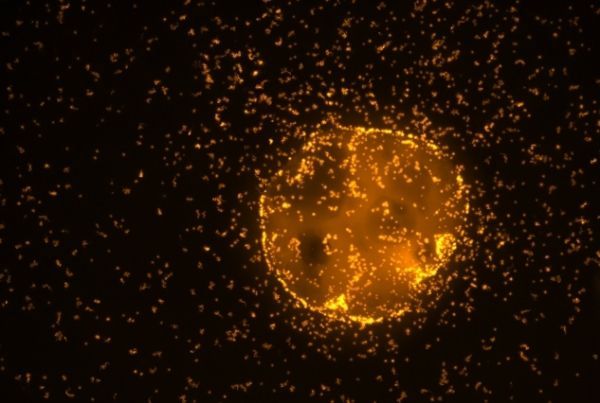Researchers from MIT have discovered simple rules of assembly of ocean microbiomes that degrade complex polysaccharides in coastal environments. Microbiomes, or microbial communities, are composed of hundreds or thousands of diverse species, making it a challenge to identify the principles that govern their structure and function.
The findings indicate that marine microbiomes can be simplified by grouping species into two types of functional modules. The first type contains polysaccharide specialists that produce the enzymes required to break down the complex sugars. The second type contains species that consume simple metabolic byproducts released by the specialist degraders and are therefore independent of the polysaccharide. This partitioning reveals a simple design for the microbiome: a trophic network in which energy is funneled from degraders to consumers.
“Our work reveals fundamental principles of microbial community assembly that can help us make sense of the vast diversity of microbes in the environment,” states Otto X. Cordero, principal investigator on the research and associate professor in the Department of Civil and Environmental Engineering (CEE).
Read more at Massachusetts Institute of Technology
Image: Microscopic particles were immersed in natural seawater and examined underneath the microscope in order to observe the colonization dynamics of bacteria using genome sequencing. CREDIT: Julia Schwartzman


